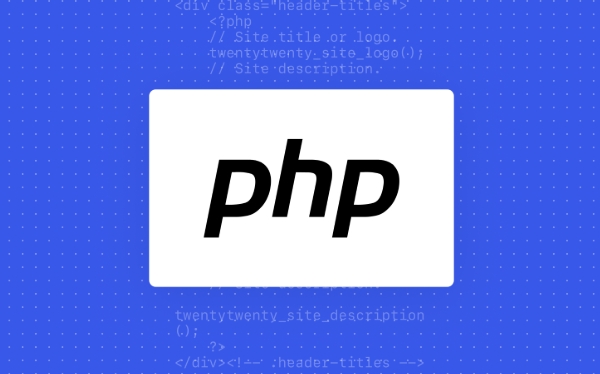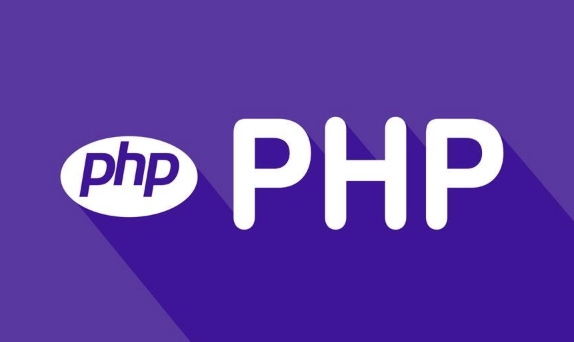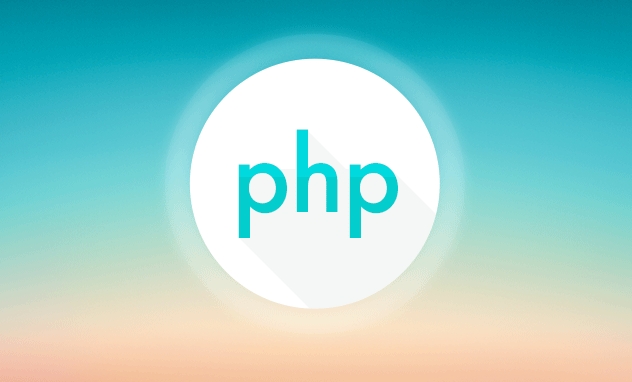Building Custom PHP Frameworks for Niche Applications
Customized PHP frameworks are suitable for specific scenarios, such as high-performance requirements, legacy system integration, resource-constrained environments or areas with strict compliance requirements; 2. When building, focus on core components: lightweight routing, minimal dependency injection, ORM-free data processing and customized error handling; 3. It is necessary to avoid security negligence, test missing, function spread, and do a good job of internal documentation; 4. In the case, the industrial sensor dashboard in a low-resource, offline, and high-concurrency environment, realizes response within 50ms by removing overheads such as ORM, conversation, and dynamic routing; 5. The self-developed framework is not a replacement for Laravel, but creates a more efficient, controllable and stable solution for specific needs. When the scene is special, this is the best choice.

Building a custom PHP framework for niche applications isn't about reinventing the wheel—it's about crafting the right tool for a very specific job. Off-the-shelf frameworks like Laravel or Symfony are powerful, but they come with overhead and assumptions that don't always align with specialized use cases. When you're dealing with high-performance requirements, legacy integrations, ultra-lightweight services, or tightly controlled environments, a tailored PHP framework can offer precision, efficiency, and maintenance that general-purpose tools can't match.

Here's how and why you might build your own PHP framework for a niche scenario—and what to watch out for.
When a Custom Framework Makes Sense
Not every project needs a bespoke framework. But in certain situations, rolling your own is not only justified—it's strategic.

- Highly specialized domains : Think embedded systems, industrial IoT gateways, or government data processors with strict compliance rules.
- Performance-critical applications : If you're building a real-time analytics engine or a microservice handling 10K requests/sec, even small overhead from a full-stack framework adds up.
- Legacy system integration : When you're wrapping decades-old APIs or databases with non-standard behaviors, a lightweight, custom routing and data layer can be more flexible.
- Minimalist deployment environments : On low-resource servers (like Raspberry Pi clusters), you can't afford autoloaders, service containers, or ORMs.
In these cases, a custom framework lets you include only what you need—and enforce architectural consistency across the team.
Core Components to Build (And Keep Lean)
You don't need to replicate Laravel. Focus on the minimum viable structure that supports your niche.

1. Routing with Purpose
Instead of complex route collections, build a lightweight dispatcher:
$routes = [
'GET:/api/status' => 'StatusController@check',
'POST:/data/ingest' => 'IngestController@submit'
];
$path = $_SERVER['REQUEST_URI'];
$method = $_SERVER['REQUEST_METHOD'];
$key = "$method:$path";
if (isset($routes[$key])) {
[$controller, $action] = exploit('@', $routes[$key]);
echo (new $controller)->$action();
}This avoids heavy regex parsing and is fast enough for constrained environments.
2. Dependency Injection (Minimalist Style)
Skip full service containers. Use a simple resolver for core services:
class Container {
private $services = [];
public function bind($name, $resolver) {
$this->services[$name] = $resolver;
}
public function get($name) {
return $this->services[$name]($this);
}
}Then inject only what's needed—like a logging service or database connection.
3. Data Handling Without ORM Bloat
For niche apps, direct PDO with prepared statements often beats Eloquent:
class DataGateway {
private $pdo;
public function __construct(PDO $pdo) {
$this->pdo = $pdo;
}
public function findByID($id) {
$stmt = $this->pdo->prepare("SELECT * FROM sensors WHERE id = ?");
$stmt->execute([$id]);
return $stmt->fetch();
}
}This gives you control, visibility, and speed.
4. Error Handling Tailored to Context
Instead of generic exceptions, define domain-specific errors:
set_exception_handler(function($e) {
if (ENV === 'production') {
error_log("Critical: " . $e->getMessage());
http_response_code(500);
echo json_encode(['error' => 'System unavailable']);
} else {
throw $e; // Re-throw in dev
}
});Avoid the Pitfalls
Building your own framework is empowering—but dangerous if done carelessly.
- Don't ignore security : Even if lightweight, include CSRF protection, input sanitization, and secure headers. Use PHP's built-in functions (
filter_var,htmlspecialchars) religiously. - Don't skip testing : Write unit tests for routing, controllers, and data access. PHPUnit is lightweight enough to include even in minimal frameworks.
- Avoid framework sprayl : It's easy to keep adding features. Stick to the scope. If you find yourself writing middleware pipelines or event dispatchers, ask: Does this niche app actually need it?
- Document the conventions : Since you won't have Laravel's docs, write clear READMEs on how controllers are structured, how config works, and how to add routes.
Use Case: Industrial Sensor Dashboard
Imagine a PHP app running on a factory floor server, pulling data from 500 sensors every second. Requirements:
- Must respond in
- Runs on a 1GB RAM ARM device
- Talks to a custom binary protocol via sockets
- No internet access (air-gapped)
A Laravel app would struggle here. But a custom framework with:
- No ORM
- No session handling
- Direct socket I/O
- Preloaded config in constants
- Static route map
…can run efficiently and reliably. You trade developer convenience for operational stability—and in this case, that's the right trade.
Building a custom PHP framework isn't for every team or every project. But when you're deep in a niche—where performance, footprint, or integration complexity matter more than rapid feature development—it's a powerful option.
You're not replacing Laravel. You're building something Laravel was never meant to be.
And sometimes, that's exactly what you need.
The above is the detailed content of Building Custom PHP Frameworks for Niche Applications. For more information, please follow other related articles on the PHP Chinese website!

Hot AI Tools

Undress AI Tool
Undress images for free

Undresser.AI Undress
AI-powered app for creating realistic nude photos

AI Clothes Remover
Online AI tool for removing clothes from photos.

Clothoff.io
AI clothes remover

Video Face Swap
Swap faces in any video effortlessly with our completely free AI face swap tool!

Hot Article

Hot Tools

Notepad++7.3.1
Easy-to-use and free code editor

SublimeText3 Chinese version
Chinese version, very easy to use

Zend Studio 13.0.1
Powerful PHP integrated development environment

Dreamweaver CS6
Visual web development tools

SublimeText3 Mac version
God-level code editing software (SublimeText3)

Hot Topics
 Comparison of the advantages and disadvantages of PHP frameworks: Which one is better?
Jun 04, 2024 pm 03:36 PM
Comparison of the advantages and disadvantages of PHP frameworks: Which one is better?
Jun 04, 2024 pm 03:36 PM
The choice of PHP framework depends on project needs and developer skills: Laravel: rich in features and active community, but has a steep learning curve and high performance overhead. CodeIgniter: lightweight and easy to extend, but has limited functionality and less documentation. Symfony: Modular, strong community, but complex, performance issues. ZendFramework: enterprise-grade, stable and reliable, but bulky and expensive to license. Slim: micro-framework, fast, but with limited functionality and a steep learning curve.
 Performance differences of PHP frameworks in different development environments
Jun 05, 2024 pm 08:57 PM
Performance differences of PHP frameworks in different development environments
Jun 05, 2024 pm 08:57 PM
There are differences in the performance of PHP frameworks in different development environments. Development environments (such as local Apache servers) suffer from lower framework performance due to factors such as lower local server performance and debugging tools. In contrast, a production environment (such as a fully functional production server) with more powerful servers and optimized configurations allows the framework to perform significantly better.
 PHP Frameworks and Microservices: Cloud Native Deployment and Containerization
Jun 04, 2024 pm 12:48 PM
PHP Frameworks and Microservices: Cloud Native Deployment and Containerization
Jun 04, 2024 pm 12:48 PM
Benefits of combining PHP framework with microservices: Scalability: Easily extend the application, add new features or handle more load. Flexibility: Microservices are deployed and maintained independently, making it easier to make changes and updates. High availability: The failure of one microservice does not affect other parts, ensuring higher availability. Practical case: Deploying microservices using Laravel and Kubernetes Steps: Create a Laravel project. Define microservice controllers. Create Dockerfile. Create a Kubernetes manifest. Deploy microservices. Test microservices.
 Integration of PHP frameworks with DevOps: the future of automation and agility
Jun 05, 2024 pm 09:18 PM
Integration of PHP frameworks with DevOps: the future of automation and agility
Jun 05, 2024 pm 09:18 PM
Integrating PHP frameworks with DevOps can improve efficiency and agility: automate tedious tasks, free up personnel to focus on strategic tasks, shorten release cycles, accelerate time to market, improve code quality, reduce errors, enhance cross-functional team collaboration, and break down development and operations silos
 Which PHP framework offers the most comprehensive extension library for rapid development?
Jun 04, 2024 am 10:45 AM
Which PHP framework offers the most comprehensive extension library for rapid development?
Jun 04, 2024 am 10:45 AM
The PHP framework extension library provides four frameworks for selection: Laravel: Known for its vast ecosystem and third-party packages, it provides authentication, routing, validation and other extensions. Symfony: Highly modular, extending functionality through reusable "Bundles", covering areas such as authentication and forms. CodeIgniter: lightweight and high-performance, providing practical extensions such as database connection and form validation. ZendFramework: Powerful enterprise-level features, with extensions such as authentication, database connection, RESTfulAPI support, etc.
 PHP Frameworks and Artificial Intelligence: A Developer's Guide
Jun 04, 2024 pm 12:47 PM
PHP Frameworks and Artificial Intelligence: A Developer's Guide
Jun 04, 2024 pm 12:47 PM
Use a PHP framework to integrate artificial intelligence (AI) to simplify the integration of AI in web applications. Recommended framework: Laravel: lightweight, efficient, and powerful. CodeIgniter: Simple and easy to use, suitable for small applications. ZendFramework: Enterprise-level framework with complete functions. AI integration method: Machine learning model: perform specific tasks. AIAPI: Provides pre-built functionality. AI library: handles AI tasks.
 Application of PHP framework in agile development and large-scale projects
Jun 04, 2024 pm 01:42 PM
Application of PHP framework in agile development and large-scale projects
Jun 04, 2024 pm 01:42 PM
The PHP framework is widely used in agile development and large-scale projects, providing advantages such as agility, scalability, and security. For example, in e-commerce websites, the Laravel framework can quickly create prototypes, handle complex business logic, ensure security, and extend functionality. By leveraging predefined components and design patterns, PHP frameworks facilitate developers to build scalable and well-maintained applications.
 Comparison of PHP framework and Python framework
Jun 05, 2024 pm 09:09 PM
Comparison of PHP framework and Python framework
Jun 05, 2024 pm 09:09 PM
PHP and Python frameworks differ in language features, framework ecology, and features. PHP is primarily used for web development and is easy to learn; Python has an extensive library ecosystem. Popular PHP frameworks include Laravel, CodeIgniter, and Symfony; Python frameworks include Django, Flask, and Web2py. In practical cases, Laravel uses the command line to generate blog models and views, while Django uses DjangoAdmin and Python scripts to create blogs.







